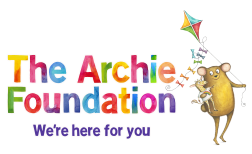This leaflet provides information and guidance about children and young people viewing the body of a loved one who has died, and also about attending the funeral.
There are no right or wrong ways of approaching these events, but they need careful consideration, taking into account the age and wishes of the child or young person.
Viewing The Body
For adults, viewing the body is a very personal decision. Some adults do not wish to view a loved one’s body and prefer to remember the person as they were when they were alive. Family traditions and expectations may play a part in this. The decision for a child to view the body of a loved one needs careful and sensitive consideration.
It is important that the child is supported to understand what has happened (within their abilities) and prepared for what the body will look like. The nature of the death and any possible changes to the person, they knew and loved, such as disfigurement through accident need to be considered as to whether this may cause confusion or increase anxiety for the child.
Some families will have the body of the loved one at home whereas, for other families, the body will rest at a funeral parlor. Rituals such as wakes may include the children. Whatever way the family chooses, it is important to explain to the children what is happening and why. Try to keep them informed and involved as much as possible in the process and support them to make their own choices.
Depending on the age and stage of the child or young person, it is helpful to discuss these issues with them so that they can make an informed choice about whether they wish to see the body and who might accompany them.
Attending The Funeral
The parent or carer will have to consider whether the child or young person attends the funeral. They may also need to balance what they can manage, particularly if it is a very close loss for them, alongside the desire to protect the child and do what is best for them.
Attending the funeral can be helpful to the child or young person although some people are concerned that witnessing the grief of adult mourners can increase the child’s distress. Whilst it is a personal decision, being involved in the funeral can provide the child with evidence of the completion of the ritual of death. It also includes them in the family event, allows them to understand that it is okay for them (and others) to be upset, and provides the opportunity for a goodbye with the family.
The decision for a child or young person not to attend needs to be explained and considered with them as appropriate to their age and understanding. This can reduce potential later upset about having been excluded. Not being a part of the opportunity to say goodbye can increase denial of the death. If the child does not attend the funeral it may be helpful to arrange some special time or event for them to say goodbye properly.
If the child or young person does wish to attend the funeral, it can be helpful to arrange for a close friend or relative to be their ‘buddy’ for the day. This can leave close mourners freer to express emotions and be supported in a way that is helpful to them with the reassurance that the child or young person is being cared for and that their needs are being met.
It is important for the child or young person to know what will happen at the funeral and to have clear information about this. Ministers or funeral directors may be able to explain things.
Children and young people can find it helpful to contribute to the funeral in some way, This may be something simple like choosing their own flowers, writing a card, or adding a special memory for the minister to speak about.
All of these things can bring a sense of the child being included in the funeral and acknowledging their relationship to the deceased person.



